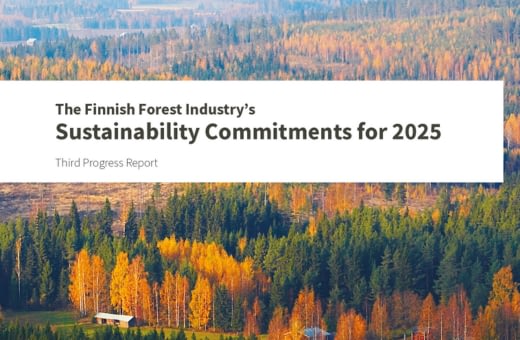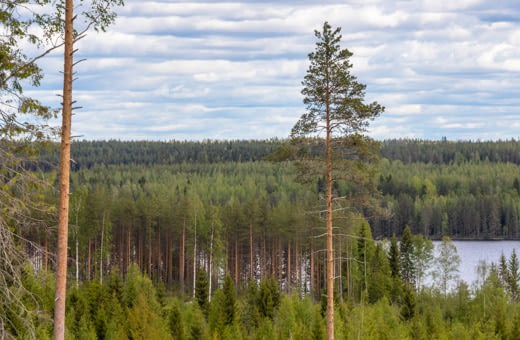Significant improvement has been achieved for decades to improve the efficiency of the water use and to reduce the water pollution load in the forest industry. Emissions have fallen to a fraction of the former levels, while production volumes have multiplied.
The share of forest industry production plants’ emissions to water systems is relatively small. For example, only 3-4% of nutrient emissions caused by human activity originate from the forest industry. On a Finnish scale, the forest industry is a moderate water user. The point source pollution caused by the industry can be reduced by efficient wastewater treatment.
Production has increased, emissions have decreased
Reducing the water pollution load of production facilities in the Finnish forest industry is widely known as a success story. The emissions were significantly reduced as early as in the 1960s and the 1970s. A good indication of the long tradition of water protection in the forest industry is the water protection policy drawn up in 1970, in which the sector set targets for water protection for the first time.
In most cases water is treated in efficient biological treatment plants. Since 1992, the production-related emissions to water from the forest industry production plants have decreased as follows:
· Nutrient emissions -58%
· Organo-chlorine compounds -90 %
· Chemical oxygen demand -69 %
· Amount of wastewater -53 %
As can be seen from the above figures, significant improvement has been achieved in recent decades in the efficiency of the water use. Water is saved by recycling it from the cleaner parts of the process to applications where water quality requirements are lower. The same litre of water circulates up to 15 times at a factory.
Every year, the Finnish forest industry spends approximately EUR 130 million on environmental protection
The Finnish forest industry strives for smooth and uninterrupted operation of its mills, which is also an advantage in managing the environmental impact. Instead of constructing new pollution abatement facilities, predicting and managing incidents is the best solution for the environment. Among the tools for managing environmental issues in the forest industry are environmental management systems such as ISO14001 and EMAS.
Over the past five years, the forest industry has invested on average EUR 20 million a year on water protection measures. It is possible to further reduce the water pollution load of the pulp and paper industry in Finland to some extent, even though the greatest strides were made in the past. Investments no longer significantly improve the state of the water systems, since the industrial projects currently produce very low emissions and account for only a small proportion of water pollution.







